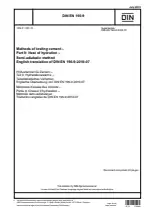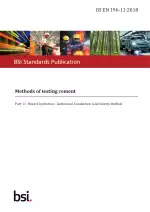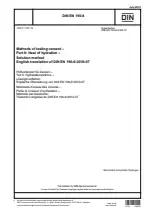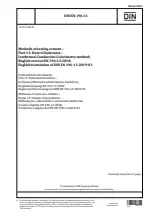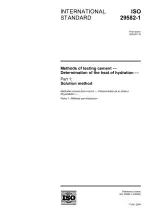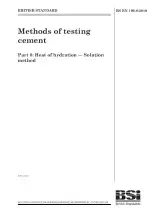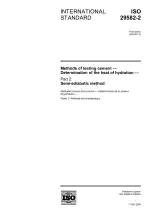Methods of testing cement - Part 9: Heat of hydration - Semi-adiabatic method
Also Known As:
The DIN EN 196-9 standard outlines a method for testing the heat of hydration of cement using the semi-adiabatic calorimetry technique, also known as the Langavant method. The purpose of this test is to measure the heat generated during the hydration process of cement over a span of several days. The heat of hydration is expressed in joules per gram of cement. This standard applies to all types of cements and hydraulic binders, regardless of their chemical composition, excluding quick-setting cements.
It should be noted that there is an alternative procedure called the solution method, described in DIN EN 196-8, which can be used separately from the semi-adiabatic method. However, research has shown that the semi-adiabatic method provides the best correlation at 41 hours, compared to the heat of solution method at 7 days.
| Descriptors | Adiabatic, Binding agents, Calorimeters, Cements, Chemical analysis and testing, Construction, Construction materials, Heat capacity, Heat of hydration, Heat of solution, Hydration, Hydration heat, Mathematical calculations, Measurement, Measuring techniques, Methods of analysis, Solutions, Test equipment, Test reports, Test solutions, Testing |
| ICS Codes | 91.100.10 - Cement. Gypsum. Lime. Mortar |
| Language(s) | English |
| File Size | 491.5 KB |

